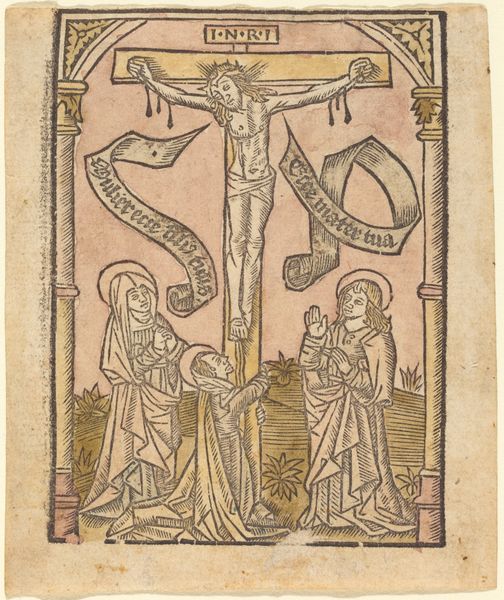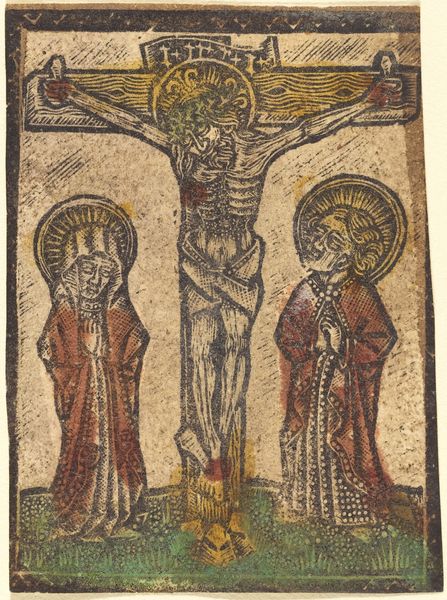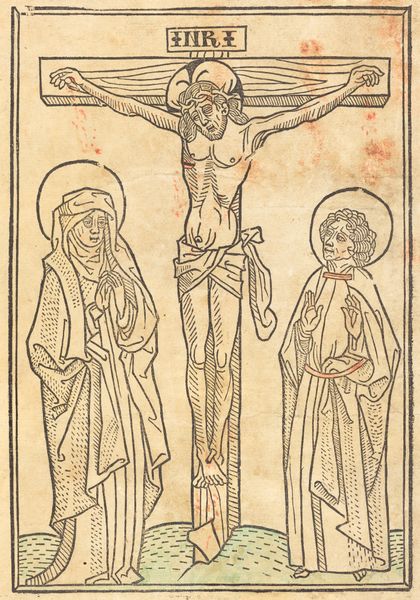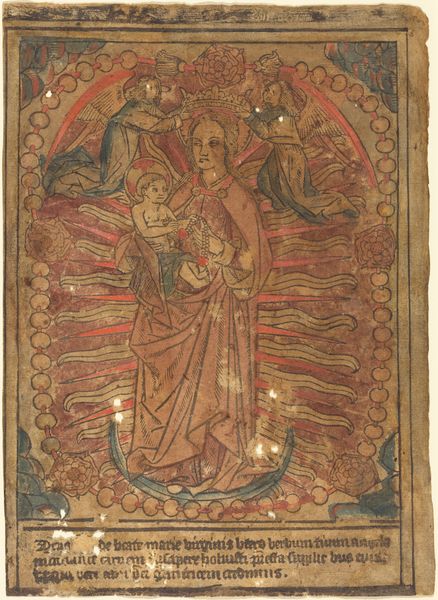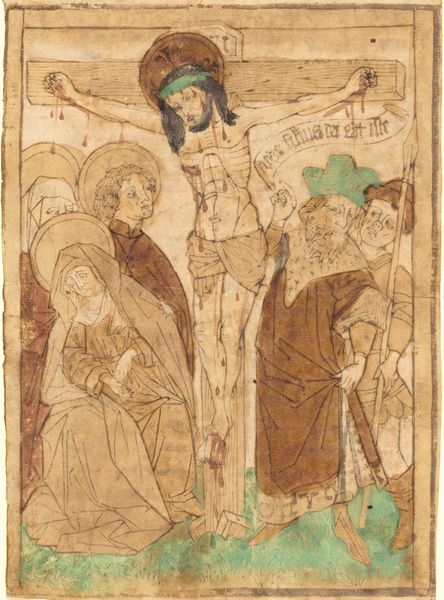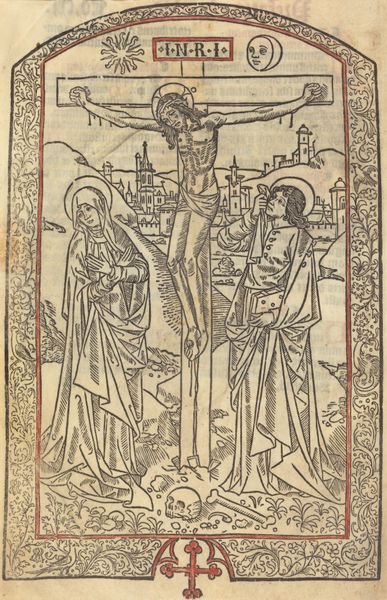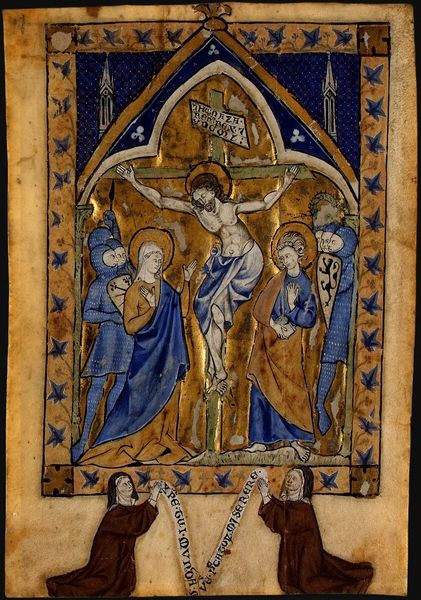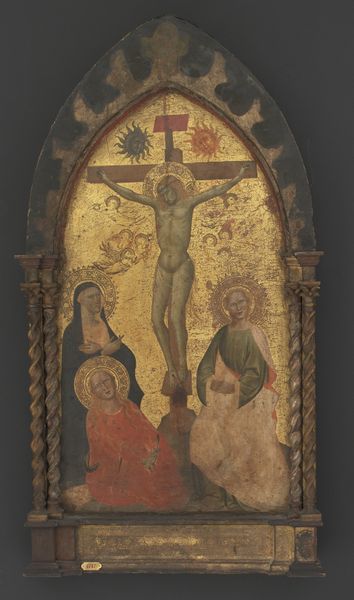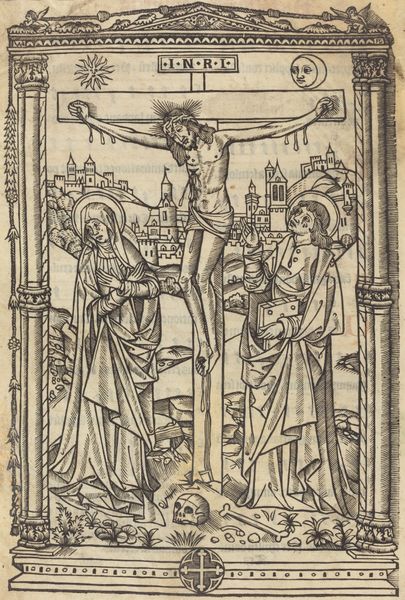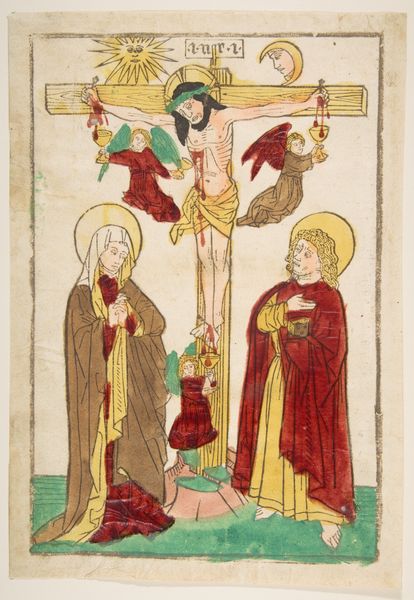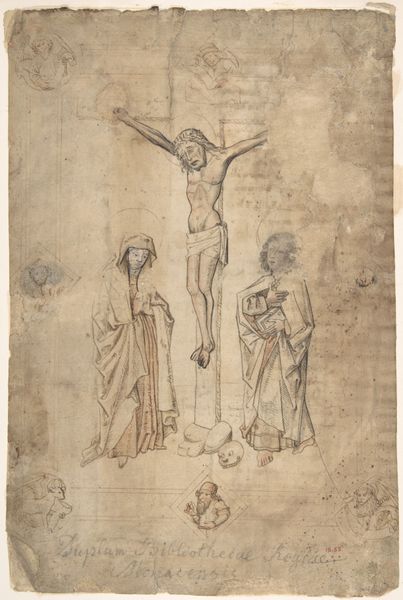![The Crucifixion [verso] by Anonymous](/_next/image?url=https%3A%2F%2Fd2w8kbdekdi1gv.cloudfront.net%2FeyJidWNrZXQiOiAiYXJ0ZXJhLWltYWdlcy1idWNrZXQiLCAia2V5IjogImFydHdvcmtzLzY5YjA2NGNhLTQ2MjYtNDg2YS04ZmIzLThjNjY3MDU3N2UwYi82OWIwNjRjYS00NjI2LTQ4NmEtOGZiMy04YzY2NzA1NzdlMGJfZnVsbC5qcGciLCAiZWRpdHMiOiB7InJlc2l6ZSI6IHsid2lkdGgiOiAxOTIwLCAiaGVpZ2h0IjogMTkyMCwgImZpdCI6ICJpbnNpZGUifX19&w=3840&q=75)
drawing, tempera
#
drawing
#
byzantine-art
#
medieval
#
tempera
#
figuration
#
coloured pencil
#
line
#
history-painting
Dimensions: overall: 17.7 x 12.3 cm (6 15/16 x 4 13/16 in.)
Copyright: National Gallery of Art: CC0 1.0
This image of the Crucifixion was carefully created with ink on parchment. It shows us the amount of labor and skill involved in manuscript production during the medieval period. The parchment itself, made from animal skin, would have been a costly material. The process of preparing the surface for illumination was time-consuming, involving soaking, stretching, and scraping. The ink, likely made from natural materials like soot or plant extracts, required careful preparation to achieve the desired consistency and color. The artist's hand is evident in the delicate linework and the subtle variations in tone. The repetitive patterns of the border decoration also showcase the artist's skill and attention to detail. The limited color palette, restricted to red and shades of brown ink, highlights the preciousness of color, and the effort it took to source and apply. By considering the materials and processes involved in its creation, we can appreciate the social and cultural value placed on illuminated manuscripts. The amount of skilled labor elevates this image beyond its religious subject matter, reminding us of the artistic practices that blur the lines between fine art and craft.
Comments
No comments
Be the first to comment and join the conversation on the ultimate creative platform.

